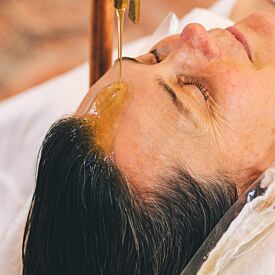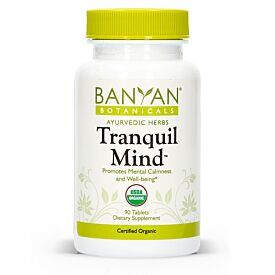Beyond Asana: Supporting Ayurveda with the Subtle Practices of Yoga
A woman who recently attended my Ayurvedic chef training on Kaua’i reminded me once again of the power of yoga and Ayurveda as combined treatment techniques. Over the past three years, this woman had been suffering from rheumatoid arthritis, which set in after the birth of her second child. She had typical symptoms of joint pain, extreme morning stiffness, fatigue, a foggy mind, and a feeling of overwhelm. She had removed most of the junk food from her diet and saw some improvement, but sought out an Ayurvedic consultation during her time at the training to find her next steps toward healing.
![]()
This woman came to me with a vata-pitta vikruti, which resulted in fear, anxiety, and mental and physical fragility. During morning asana practice, she sobbed from fear of the pain in her body and shame for having fear. During her consultation, I shared with her Ayurvedic techniques to calm vata, including changes to ahar (diet), vihar (lifestyle), incorporating abhyanga, and other possibilities. But after seeing the power of yoga in healing rheumatoid arthritis in my own body, I also incorporated simple restorative asana, pranayama, and mudra. Sitting at the wall for meditation with a tall stack of blankets to support her, I had her do vayu mudra, the mudra of air. It’s a simple mudra where the index finger touches the base of the thumb and the thumb presses gently while keeping the other three fingers as straight as possible. Vayu mudra is good for managing arthritis, anxiety, and calming vata dosha. It also corrects intestinal gas and prevents any disease that is due to the imbalance of vayu. I told her to practice vayu mudra five to forty-five minutes daily for two months, and thereafter, five minutes per day.
By the second week of the chef training, this woman was able to participate in asana, and even hold poses for twenty breaths. It was a powerful transformation, the result of the combined practices of Ayurveda and yoga.
The Subtle Practices of Yoga
Although the physical activity of asana attracts many people, the subtle practices of yoga have a cumulative effect that is profound, especially in combination with Ayurveda. Practices such as hand mudras, conscious breathing, pranayama, simple meditation, and mantra encourage and support the healing process on an energetic level, while ahar, vihar, and dinacharya support the physical and mental. These often overlooked yoga practices are particularly empowering for those who are physically limited, as the practices allow prana to begin to flow in places where it has been stuck.
I often recommend two yoga practices to my Ayurveda clients. First is the pranayama Nadi Shodhana. This practice balances all doshas, aligns the heating and cooling currents in the body, oxygenates the blood, and calms the mind. Practicing nine rounds of nadi shodhana, followed by a short meditation of at least five minutes, brings a person more fully into connection with Self. I recommend other pranayama as appropriate for the individual condition with careful guidance to ensure the client practices it in a way that does not cause greater imbalance (this is especially true of pitta-provoked clients, who tend to push themselves).
As Ayurvedic practitioners, we know that all physical ailments have an emotional or spiritual root. With this in mind, the second practice I recommend is incorporating the yamas and niyamas (ethical guidelines) into daily life. Very often, clients consume a regular diet of negative self-talk, self-judgment, and shame. Practicing ahimsa (nonviolence), in the form of kindness, consideration, and respect for oneself and others can create a tremendous shift in consciousness. Similarly, asking them to practice satya (honesty), allows clients to see themselves and life as they are, not how they wish things to be. With satya as a guide, they can clearly see the next step and take it when they are ready. Simple exercises and reminders to guide them in these steps are helpful.
Yoga and Ayurveda as Sister Sciences
Our primary purpose as practitioners is to bring healing to the body and mind with Ayurveda. The gifts of yoga—especially these subtle practices that are not commonly taught in modern yoga classes—aid and strengthen the effects of Ayurveda and give the client a more holistic experience than they would otherwise have had.
If you are a practitioner in both Ayurveda and yoga, give yourself permission to move fluidly between these worlds to find the most effective ways to guide your clients to health. If you don’t have training in the eight limbs of yoga, I encourage you to seek it from a trusted teacher so that you can experience the profound connection that has existed for centuries between these two traditions.












